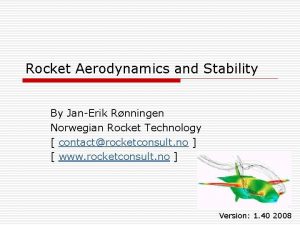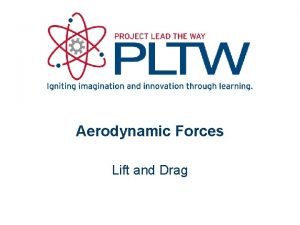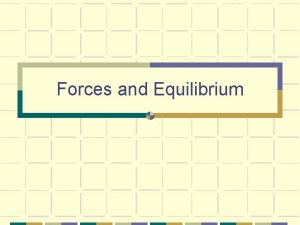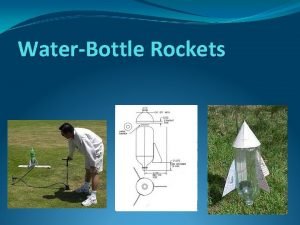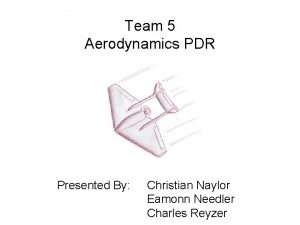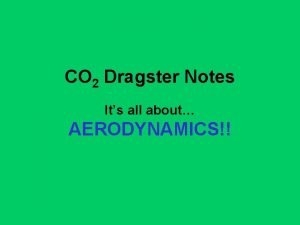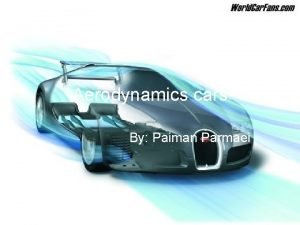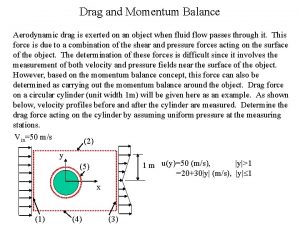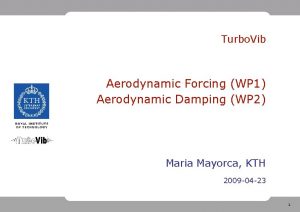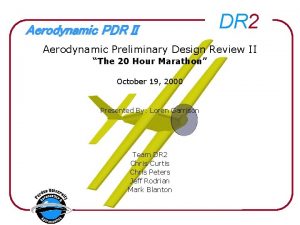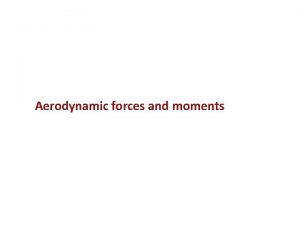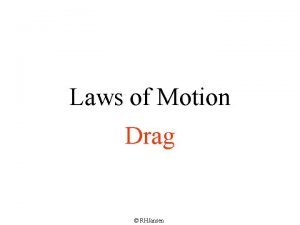Aerodynamic Drag Force Air resistance fluid resistance motion














- Slides: 14

Aerodynamic Drag Force ü Air resistance (fluid resistance) ü motion of the air flowing past projectile ü equal to projectile’s velocity BUT in the opposite direction of projectile’s motion

Headwind • Vdrag + Vheadwind Tailwind • Vdrag - Vtailwind • flow velocity acting on body • body v = 20 mps • Vheadwind = 5 mps • Vres = ------- • Vtailwind = 5 mps • Vres = ------

Skin Friction ü most noticed @ low v ü rubbing of layers of air adjacent to projectile ü with: flow v, surface size, surface roughness ü secondary concern Profile Drag ü with area exposed to approaching air flow ü with projectile v ü lead side = pressure ü trail side = pressure ü main source of Drag

STREAMLINING Ø Achieved by: 1. decreasing size of area facing oncoming airflow 2. tapering leading side - air is not abruptly moved Ø Streamlining results in: A. more laminar flow past body with less “wake” B. less turbulence behind body less difference in pressure zones

Mass of Projectile and Drag Effect Øa = F m Ø a in this case stands for deceleration [negative a] Ø deceleration = F m Ø deceleration inversely proportional to projectile m

Drag Factors FDrag = ½ CD A ρ v² Ø Skin Friction and Profile Drag Ø CD coefficient of drag, indicates how streamlined a projectile is (low number = very streamlined) Ø A is the frontal area of projectile facing the flow Ø ρ (rho) is the air density (density less in warm air and at higher altitude) Ø v² means if v doubles, drag quadruples

Profile Drag increases from a to c as more AREA is exposed to oncoming airflow AREA a: -----b: -----c: -----

FLUID LIFT FORCE Ø FL (Lift Force) always perpendicular to direction of the oncoming air flow Ø Lift can be upward, downward, lateral Ø FL due to difference in pressure zones on opposite sides of projectile Ø Bernoulli’s Principle: Øhigh flow velocity creates ------- pressure zone Ølow flow velocity creates ---- pressure

flow v on top p zone on bottom upward Flift flow v on top p zone on bottom downward Flift

8 -May-2001 National Post from “New Scientist” David Anderson disputes Daniel Bernouilli’s Principle

LIFT : DRAG • Maximize LIFT FORCE by creating an optimal angle of attack or shaping projectile like an airfoil • Minimize DRAG FORCE with a moderate ATTACK • FL = ½ CL A ρ v² CL (lift coefficient) ρ ( air density) A (area of pressure) v² (air flow velocity)

FIG K. 9 page 424


http: //www. grc. nasa. gov/WWW/K-12/airplane/incline. html LIFT and DRAG: Effects of Inclination of an AIRFOIL
 Rocket aerodynamics
Rocket aerodynamics Drag equation
Drag equation Fluid resistance definition
Fluid resistance definition Ignoring friction air resistance and electrical resistance
Ignoring friction air resistance and electrical resistance Advantage
Advantage Contact vs noncontact forces
Contact vs noncontact forces Is gravity a contact force
Is gravity a contact force What is a contact force
What is a contact force Contact and non contact forces
Contact and non contact forces Waterbottle rockets
Waterbottle rockets Mean aerodynamic chord
Mean aerodynamic chord Least aerodynamic shape
Least aerodynamic shape Dragster aerodynamics
Dragster aerodynamics Drag divergence mach number
Drag divergence mach number Aerodynamic devices
Aerodynamic devices
